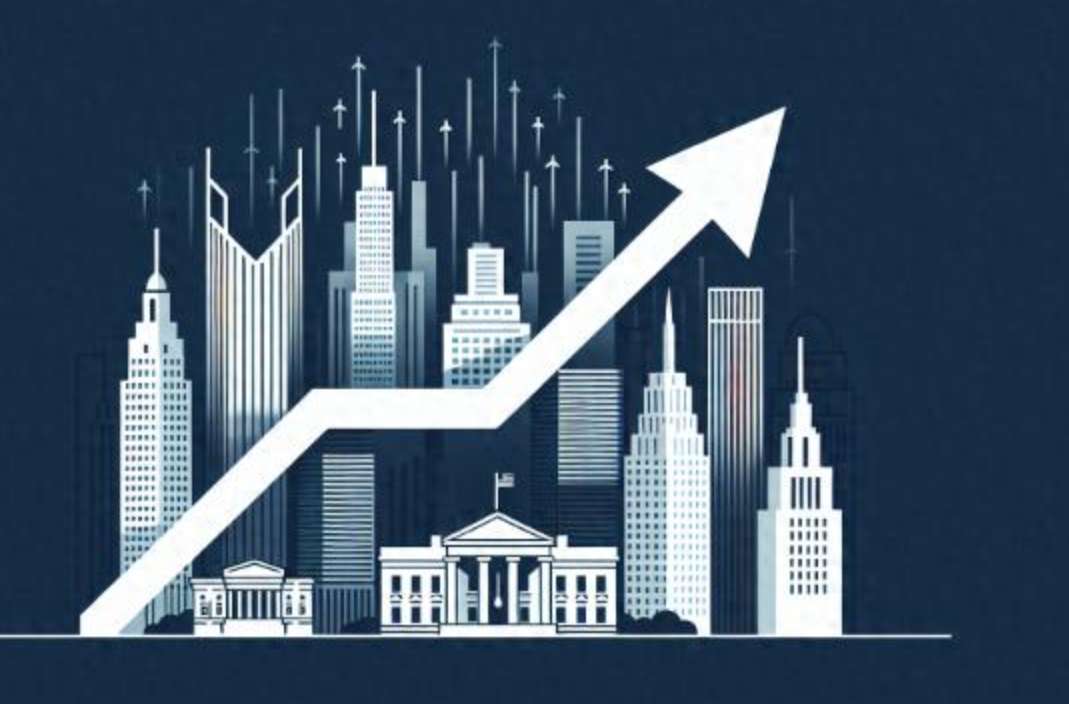In January, the United States experienced a notable rise in inflation rates, with housing costs identified as the primary contributor to this surge. The Federal Reserve has continually emphasized the urgency of addressing this persistent element, considering it a key obstacle in their pursuit of achieving the long-term inflation target. Despite fluctuations in various sectors, the skyrocketing prices of residential properties have left prospective buyers in a state of shock.
Recent data released by the U.S. Bureau of Labor Statistics indicated that the overall inflation rate for January exceeded expectations, prompting the Federal Reserve to adopt a cautious stance regarding potential interest rate cuts. The adjusted core Consumer Price Index (CPI) witnessed a month-to-month increase of 0.4%, ultimately resulting in a year-over-year rise of 3.3%. Economists often argue that the core CPI, which excludes the more volatile food and energy prices, serves as a more accurate reflection of underlying inflation trends. When delving into the overall CPI, one finds an increase of 0.5% month-over-month and a 3% jump year-over-year, with nearly 30% of this growth attributable to housing costs.
The unadjusted housing inflation rate in January registered at 4.4%, a slight decrease from the previous value of 4.6%. This stubborn persistence of housing inflation remains one of the primary reasons why the overall inflation rate has failed to drop to the Federal Reserve’s ideal target of 2%. A year prior, the Federal Reserve commenced a gradual decrease of interest rates from a 23-year high, leading some financial experts to believe that the central bank had triumphed in its battle against historical levels of inflation. However, since the first interest rate cut in September, both the CPI and Personal Consumption Expenditures (PCE) indices have remained stubbornly above the desired threshold.

Understanding the role of housing inflation within the CPI measurement can be somewhat perplexing for everyday investors. Housing inflation is essentially divided into two components: the rent of primary residences and the owners’ equivalent rent of residences, which estimates the rent a homeowner would pay if they were to lease their property. Together, these metrics account for over 33% of the total CPI weight. Consequently, prolonged high levels of housing inflation inevitably translate into sustained overall inflation.
Former U.S. Bureau of Labor Statistics Commissioner Erica Groshen highlighted the disproportionate weight that housing holds within the CPI market basket. She acknowledged the lagging nature of these changes, which can be attributed to the typical leasing agreements in which tenants often commit for one to two years. Neil Mehrotra, a policy advisor at the Federal Reserve Bank of Minneapolis, echoed these sentiments, confirming that rental inflation trends tend to fluctuate at a sluggish pace due to the nature of these contracts.
“A portion of the rental inflation we are currently experiencing can actually be traced back to trends that occurred 12 to 18 months ago,” Mehrotra noted, emphasizing the lag in official data reflecting real-time market conditions.
In contrast, housing represents a smaller portion of the Federal Reserve's preferred inflation gauge, the PCE, constituting less than 20% of its total weight.
The escalation in housing prices has permeated vast stretches of the nation. The National Association of Realtors reported that in the fourth quarter of 2024, home sales prices rose in a staggering 89% of metropolitan areas. High mortgage rates have exacerbated this situation, as many homeowners who locked in lower rates during previous years are hesitant to sell their properties, resulting in a diminished supply of homes. Additionally, a chronic shortage in home construction has further tightened new housing availability, contributing to the upward pressure on prices.
The increasing costs of insurance, coupled with a rise in the cancellation of private insurance policies, are further complicating the affordability crisis faced by homeowners across the country. A Senate Budget investigation revealed that between 2018 and 2023, there was a threefold increase in the number of counties where private insurers opted not to renew policies. Homeowners unable to secure private insurance often turn to state-run residual market insurers, yet these policies frequently offer limited coverage at higher premiums.
The spiking costs of insurance premiums not only pose a challenge for homeowners and prospective buyers but also jeopardize tenants, who may bear the brunt of increased costs passed down by landlords. For many retirees and those relying on fixed income, keeping up with soaring insurance premiums, alongside escalating property taxes, culminates in a financial burden where total expenses overshadow mortgage payments.
Despite the Federal Reserve’s affirmative actions in reducing interest rates, mortgage rates remain elevated, curtailing the financial capacity of buyers. Data from Freddie Mac indicated that the average rate for a 30-year fixed mortgage in the United States hovered around 6.89% last week—a marginal drop from 7.04% in January but still exceeding the average over the past 14 years prior to 2022.
However, there are signs suggesting stability in the rental market prices. Redfin’s data indicates that in December 2023, the national median rent fell by 0.3% year-on-year to $1,594, marking the lowest level since March 2022.
Neel Kashkari from the Federal Reserve Bank of Minneapolis stated, "Housing continues to be a critical factor in driving inflation. We have significant confidence in the direction of new lease pricing trends, but these changes traditionally take one to two years to fully manifest in official inflation statistics." He affirmed that this trend could ultimately help mitigate inflation levels.
Recognizing the complexities of housing inflation, Aditya Bhave, a senior economist at Bank of America, opined that although housing inflation may see a year-on-year decrease in the coming year, it would be premature to declare the Federal Reserve's fight against inflation as resolved. Certain policy changes introduced by the U.S. President may reignite inflationary pressures, particularly within the housing sector.
Nonetheless, Bhave concluded with optimism: “The long-anticipated ease in housing inflation is finally taking shape.”